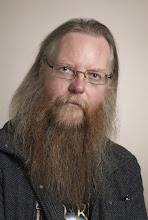Tanskalaiset viikingit sitten varmemmin kokivat Alfred Suuren kehittämän turvalinnakkeiden eli burhien tehokkuuden heidän hyökkäyksiään estämässä ja toivat idean Suomenlahden piiriin, ehkä jopa Turun syntysijoille saakka.
Wulfstan of Hedeby
Wulfstan of Hedeby (Latin Haithabu) was a late 9th century traveller and trader. His travel accounts, as well as those of another trader, Ohthere, were included in Alfred the Great's translation of Orosius' Histories. It is unclear if Wulfstan was English or indeed if he was from Hedeby, in todays northern Germany near the city of Schleswig.
Hedeby (Danish pronunciation: [ˈheːðəby], Old Norse Heiðabýr, from heiðr = heathland, and býr = yard, thus "heath yard"), mentioned by Alfred the Great as aet Haethe (at the heath), in German Haddeby and Haithabu, a modern spelling of the runic Heiðabý(r) was an important trading settlement in the Danish-northern German borderland during the Viking Age. It flourished from the 8th to the 11th centuries.
According to this account, Wulfstan undertook a journey by sea from Hedeby to the trading center of Truso around the year 880. He names the lands the coasts he passes.
Location of Druzno Lake.
Truso, situated on Lake Druzno, was an Old Prussian (Pomesanian) town near the Baltic Sea just east of the Vistula River. It was one of the trading posts on the Amber Road, and is thought to be the antecedent of the city of Elbląg (Elbing). In the words of Marija Gimbutas, "the name of the town is the earliest known historically in the Baltic Sea area". The main goods of Truso were amber, furs, and slaves.
- "Wulfstan said that he went from Haethum to Truso in seven days and nights, and that the ship was running under sail all the way. Weonodland was on his right, and Langland, Laeland, Falster, and Sconey, on his left, all which land is subject to Denmark. "Then on our left we had the land of the Burgundians, who have a king to themselves. Then, after the land of the Burgundians, we had on our left the lands that have been called from the earliest times Blekingey, and Meore, and Eowland, and Gotland, all which territory is subject to the Sweons; and Weonodland (= the land of the Wends) was all the way on our right, as far as Weissel-mouth."
This may be the earliest recorded use of the word "Denmark" (or "Danemearcan").
Toinen merkittävä tuon ajan matkailija oli Othere:
Ohthere of Hålogaland (Norwegian: Ottar fra Hålogaland) was a Viking adventurer from Hålogaland. Around 890 AD he travelled to England, where Alfred the Great, king of Wessex, had his tales written down.
Ohthere reported that he lived "north-most of all the Northmen", and that "no-one [lived] to the north of him". He spoke of his travels north to the White Sea, and south to Denmark and England, describing his route. He also spoke of Sweoland, the Sami people (Finnas), and of two peoples called the "Cwenas" living in Cwena land and the "Beormas". Ohthere reported that the Beormas spoke a language related to that of the Sami people, and lived in an area of the White Sea region. This is marked on the accompanying map as "Bjarmland", and has been seen by some as a reference to people of the Old Permic culture.
"Ottars reise" - a modern map, annotated in Norwegian, showing Ohthere's reported travels.
Ohthere's story is the earliest known written source for the terms "Norway" (Norðweg) and "Denmark" (Denamearc). The regular opinion is that the place where Ohthere lived was somewhere in the Malangen-area of southern Troms.
Matkalla jossain
2-8-2010
Simo Tuomola





Ei kommentteja:
Lähetä kommentti